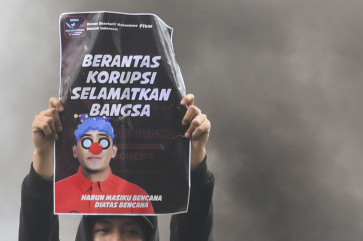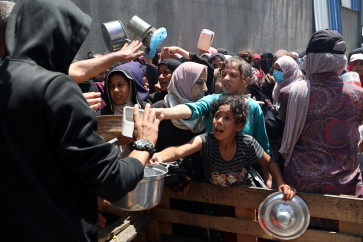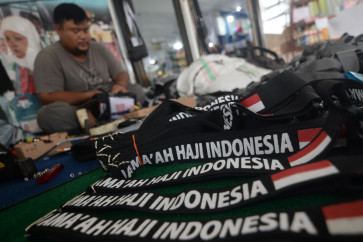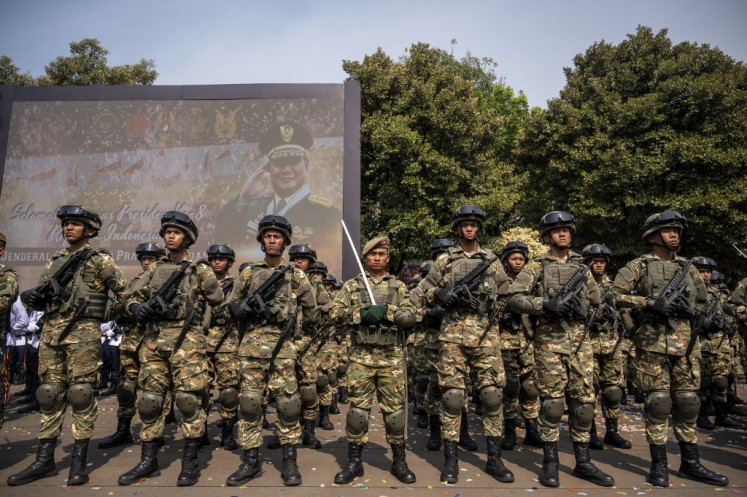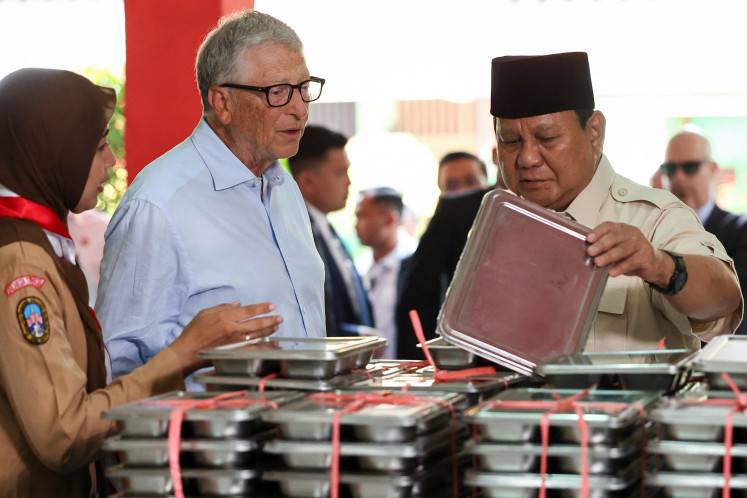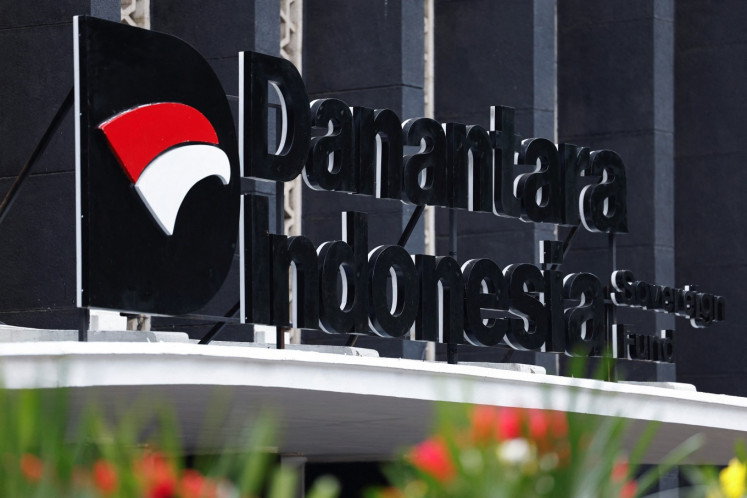Megawati and ‘pengajian’ that will never end
Seen in anthropological terms, for women the study group constitutes an arena of “liberation” from their routine household obligations as wives and mothers.
Change text size
Gift Premium Articles
to Anyone
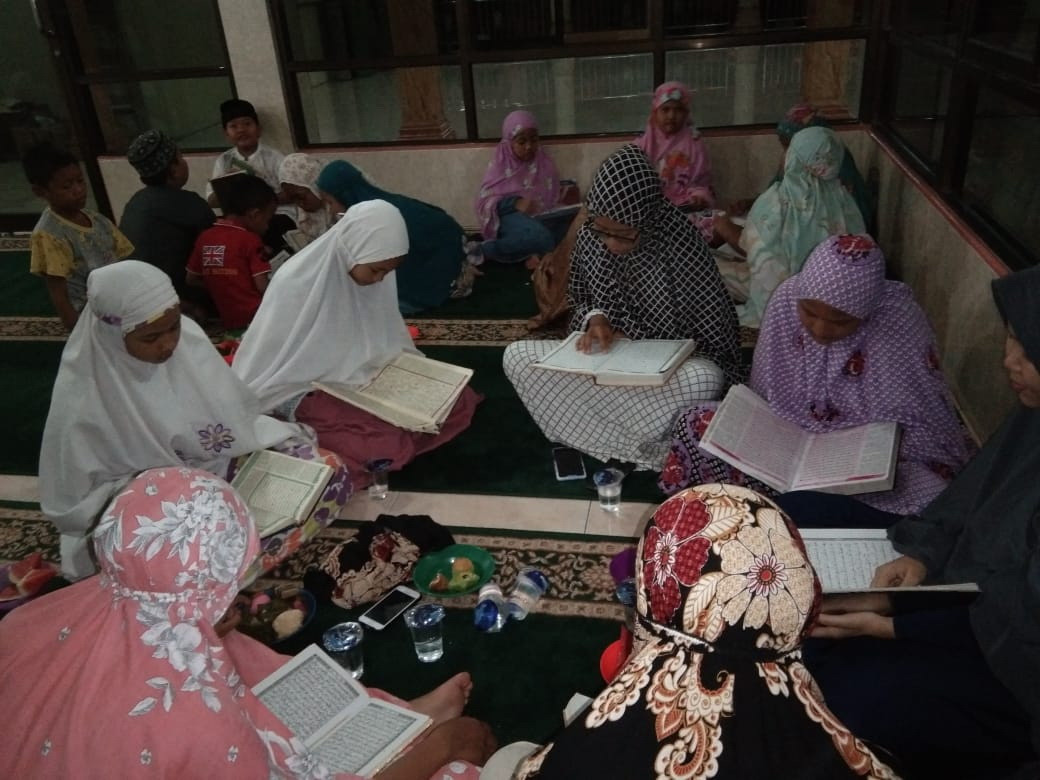
T
he virtual world is in a whirl after the question, or more accurately criticism, from Megawati Soekarnoputri, chair of the steering committee of the Agency for the Implementation of the State Ideology of Pancasila (BPIP), about the activities of ladies who are busy attending pengajian (religious study groups).
She asked, “When will it finish?” You see, according to Megawati, Indonesia’s fifth president, there are so many other things that women should be attending to, not just pengajian.
In 1992, my study about “Mubalighat as mediators in religion” was published in the book Women and Mediation in Indonesia (KITLV, 1992). It described the role of preachers in mediating values about Islam and women according to the views of the ustadzah (female religious teachers) or mubalighat (female preachers) in the context of development for women such as the Family Welfare Movement (PKK), family planning, integrated health service posts (Posyandu) and family issues such as polygamy. The article examined why women from different social classes were so active in pengajian even though the material presented often did not fulfill their expectations or defend their causes as women.
At that time, pengajian was a communal activity within majelis ta’lim (seated Islamic study groups) in suburban areas. Gradually, however, in line with Soeharto’s growing openness toward cultural, non-political Islam, pengajian entered more elite areas, alongside the burgeoning fashion trend of Muslim garb created by entertainers who pioneered modern Muslim fashions such as Ida Leman, Ida Royani or Anne Rufaida.
Pengajian started to emerge among the elite, such as those initiated by the Islamic study group Paramadina led by scholar Nurcholish Madjid, based in Pondok Indah, South Jakarta, or the Shia study groups led by Jalaluddin Rahmat in Bandung or more exclusive sessions such as pengajian at private homes inviting prominent ustads such as Aa Gym.
The topics studied in these forums can generally be divided into four themes: tafsir (examining the interpretation of the Quran) as developed by Quraish Shihab and Aa Gym, the study of fiqh (Islamic jurisprudence) by, among other figures, Zainuddin MZ or Kosim Nurseha, studies of Sufism for more limited groups and studies of selected topics on various themes.
There were a number of ustadzah who were quite well known, such as Tuty Alawiyah and Suryani Thahir. The participants in their sessions were usually Jakarta’s native Betawi ethnic group or newcomers living in Jakarta neighborhoods. There were also ustadzah from the Aisyiyah community such as Farida Ubayya, Lutfiyah Sungkar and Ibu Kewusnendar, as well as some from the pesantren (Islamic boarding school) community.
The trend of pengajian became even more popular after the reform movement in 1998, along with the rising religious spirit in urban areas and the entry of pengajian into elite environments. This spirit was also influenced by religious dramas on TV and the role of social media.
At the same time, the new political freedom also provided greater space for religious groups outside mainstream Islam to conduct pengajian. They competed for “listening space” in religious outreach through pengajian activities with various sectarian ideologies – Salafi, Shia, international Sufi tarekat and even pengajian run by entertainers. Most of the active participants in all of these activities were women.
So why are women so keen on taking part in pengajian? Seen in anthropological terms, for women the study group constitutes an arena of “liberation” from their routine household obligations as wives and mothers. After their husbands leave for work and their kids for school, these women need a “space for conversation”. Pengajian is a place where nobody, including husbands, can disturb them.
In pengajian they can relax, laugh and have fun. For this reason, the most popular ustads/ustadzah are the ones who can entertain their audience and make them laugh – not just explore religion more deeply.
In fact, the topics studied tend to be repeated throughout the year following the sequence of months in the Islamic calendar, such as the religious law on fasting during Ramadan, the pilgrimage in the Haj month, the birth of the Prophet in Maulud, etc.
In line with their nature as forums for preaching, pengajian typically contain moral messages or reactions to current events. This also relates the participants with their pengajian, because up-to-date themes that appear in the media can be discussed. Topics on specific issues such as raising children, sexuality or children’s problems in school are seldom discussed deeply, because pengajian is not an academic study, nor is it a place for consultation for solutions.
So clearly, for housewives, pengajian are more than just a way to learn more about religion. It is an activity for women that never ends, unlike Megawati’s expectation.
The psychologist Saparinah Sadli said once a man who had just retired came to her to express his uncomfortable feelings at home because his wife attended pengajian frequently. But when invited to come along, he said he could not experience the same kind of joy as his wife.
How could these ladies not be happy? At the pengajian they can exchange stories, gossip, even do business while studying religion. At the pengajian, they can restore their spirits to survive their days.
Political parties have amputated the people’s voices, complaints and opinions through official forums. Only institutions like pengajian can accommodate their causes and discuss their problems for free.
In the industrial outskirts, working-class women are also active in pengajian. But Rumah KitaB’s research found that mostly they join study groups with a Salafi character that give definite answers, everything in black and white, about religious law. They do not have time to recite shalawatan or pursue the study of religious law that is full of hypotheses. Their hard lives, in which everything must be done fast, require religious teaching that is instant – no time to listen to joking lectures or more sophisticated studies.
Social media helps preachers rise to fame and reach out to new audiences, as happened during the COVID-19 pandemic, when human mobility was restricted. Some ustads from pesantren or the Nahdlatul Ulama (NU) have started to exploit social media. Pengajian in a semi-seminar format that invite resource persons through social media are also conducted by media operators, such as Abu Marlo, who encourages people to use a reflective approach to religion.
It seems the pandemic has also freed women from pengajian. Obviously, at first, they felt there was something missing from their routine. But this shift from majelis ta’lim to “majelis online” has also given women more freedom in their pengajian activities. Without being constantly watched and monitored by their friends, they can choose which topic and which ustads/ustadzah they want to follow. They are also freed from the obligation to wear Muslim outfits. But there is one thing that is lost by not attending pengajian in person: freeing oneself from household drudgery.
So, it is pointless for Megawati to ask when these pengajian will end. This is the activity that housewives are most likely to take part in, and the one most likely to bring them freedom and even joy.
***
The writer is a visiting fellow at KITLV, Leiden University, the Netherlands.

